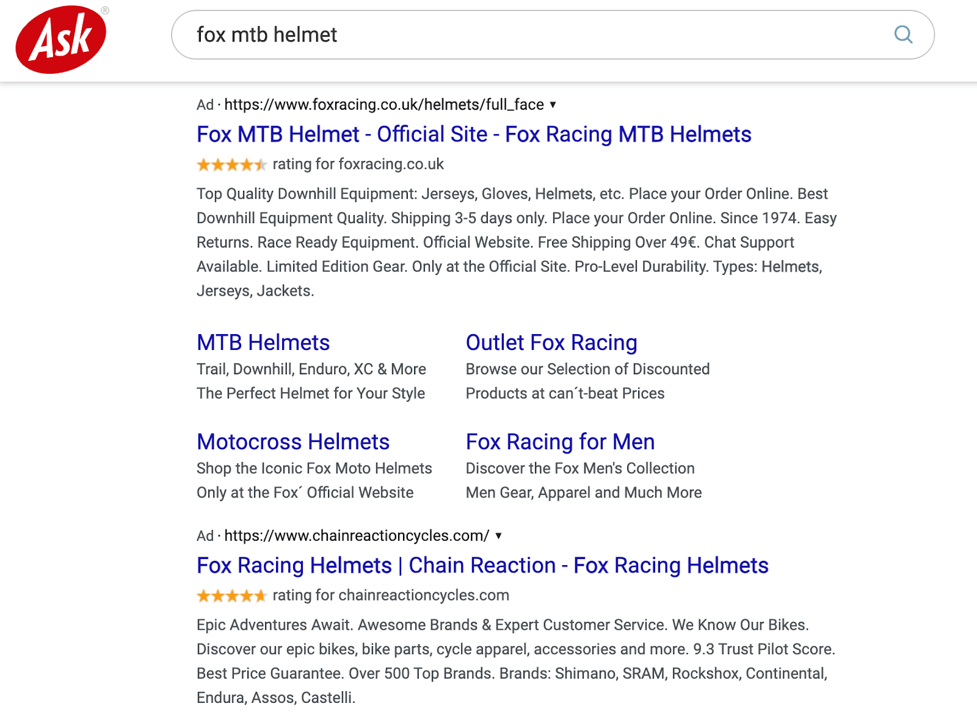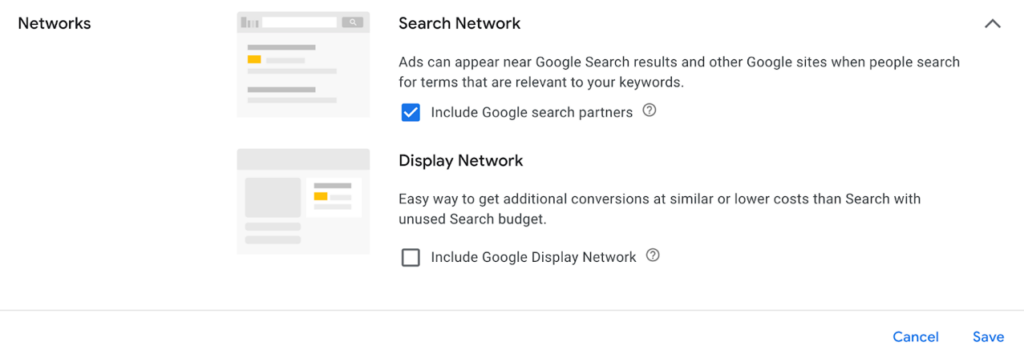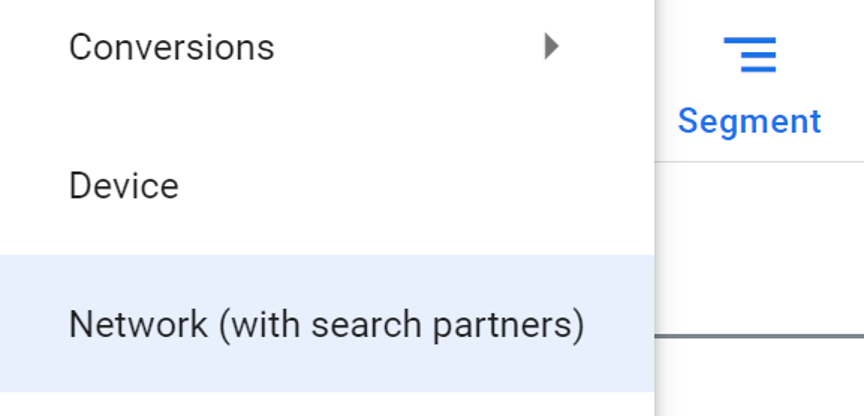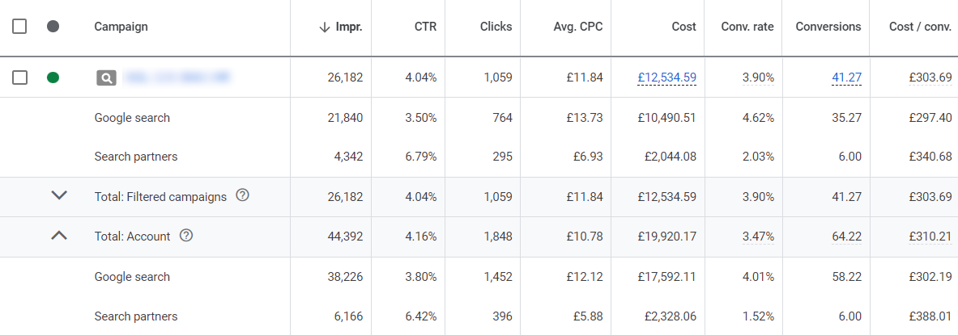Media
If you are managing Paid Search campaigns you may not have put too much thought into search partners before, especially as they are opted in by default. This, combined with the limited or outdated information available about them, can mean they are often overlooked and rarely discussed.
In this blog post, I’ll delve into the details of what they are and how best to manage them, including how important segmentation becomes if you do opt in (your clickthrough rate could be much higher than you thought…)!
What are search partners?
Both Google and Microsoft offer search partners as an option, with Microsoft providing more flexibility when managing them (including insight into what is showing where and the ability to block specific placements). The quality however tends to be much lower than you can expect from Google Ads – which is what this guide will focus on.
To answer this question, let’s start with the definition from Google Ads Help:
“[Search partners are] Sites in the Search Network that partner with Google to show ads and free product listings. Search partners extend the reach of Google Search ads and listings to hundreds of non-Google websites, as well as YouTube and other Google sites.
On search partners sites, your ads and listings can appear on search results pages, site directory pages or other pages related to a person’s search.”
Put simply, they are a group of search-related websites where your ads and free product listings can appear on, alongside the standard Google SERP (search engine results page) we are all familiar with.
What are some examples of search partners?
While there is not a definitive list of sites in the search partner network (which is constantly changing and updating), there are a few long-standing examples such as Ask.com:

The main thing to know is that, despite the name (“search” partners), this inventory is not just search engines, and can include:
- Website search (such as Amazon)
- Search across Google properties (such as YouTube, Google Play Store and Google Maps)
- Second tier search engines (such as Ask.com or dogpile.com)
- Directory pages
- Parked domains
- Product pages
One worry for advertisers is the potential for click fraud through search partners – whilst Google has a complete view of who is using their service, they won’t have the quite the same view of those accessing third party sites where ads are being shown.
Should I run search partners?
Search partners are a campaign level setting which, by default, Google Ads will opt you into.
Turning them off is as simple as unticking this option:

Across most accounts, running search partners should increase conversions volume by 5-10% at a similar to slightly higher Cost Per Acquisition/Return On Ad Spend, however results will vary. Some verticals in particular such as finance see comparatively weak performance compared to Google Search, and are instead worth turning off and saving the budget.
The answer is, of course, to test them – the easiest way is to opt in, then use segmentation to review performance and see if they are worth continuing.
You could also run an A/B experiment (search + search partners versus search only), however in most circumstances this will be overkill.
How can I optimise search partner data?
The official answer is pretty cut and dry – you either opt your campaigns in, or opt them out.
There are however a few more steps you can take to get under the skin of what is happening.
The first step is knowing how to get the performance data which can be accessed through the “Network (with search partners)“ segment from the toolbar:

Once applied, you can then review performance across each element, as well as the account as a whole:

Even more detail can also be found in a search terms report with the same “Network (with search partners)” segment applied. With this you can then start to see the sort of queries being matched across the Search Partner network:

From here, you may find search partners drive a large amount of impressions and clicks through odd looking queries – more on this to follow.
Is your campaign performance skewed by search partners?
There a few more callouts:
- Search partner performance can dramatically skew a campaign’s performance. Make sure you are segmenting and understanding what your true Click Through Rate (CTR) or Cost Per Click is. In the following example, Campaign A’s CTR looks very average if you look at blended results, but much better when just looking at Google search. This is because search partners are driving a very large amount of impressions at a very low CTR.
- This suggests these impressions are of a much lower quality than Google search, and shouldn’t really be considered equivalent when calculating CTR.
- We can also see very few conversions at a much higher Cost Per Conversion – given search partners seem to be driving huge amounts of low quality impressions that don’t appear to be doing much, this could be a good candidate to opt out of the search partner network.

- Do note that search partner performance does not factor into quality score calculations. Whilst you may have noticed that search partners are driving a very low CTR and decided to turn them off, don’t expect to see better quality scores (and all the benefits that can bring) as a direct impact of this change.
- Remember that as per Google’s description, search partners can serve ads in a variety of locations. This is an important caveat as it often explains why you see odd search queries when running search query reports.
Using this search query report as an example:

The highlighted query keyword is two category terms merged together (think along the lines of [gardening equipment garden shopping]) so it’s unlikely anyone would be searching like this, let alone driving thousands of impressions.

Adding in the “Network (with search partners)” segment shows that this traffic is 100% coming from search partners, and is likely a category or classification of the page the search partner is serving the text ad on. There are plenty of other examples we have seen that include very long (10+ word) queries that are likely to be product descriptions.
Blocking out these sorts of queries via negative keywords can help make a small saving. If search partners as a whole are working, just block any particular standout examples you find in search query reports. This can also help minimise situations (as mentioned earlier) where search partner performance is dragging down the average and hiding the true story when not segmented out.
With all this in mind, you’re all set to make the most of search partners! If you still have questions or need any help, then please get in touch.